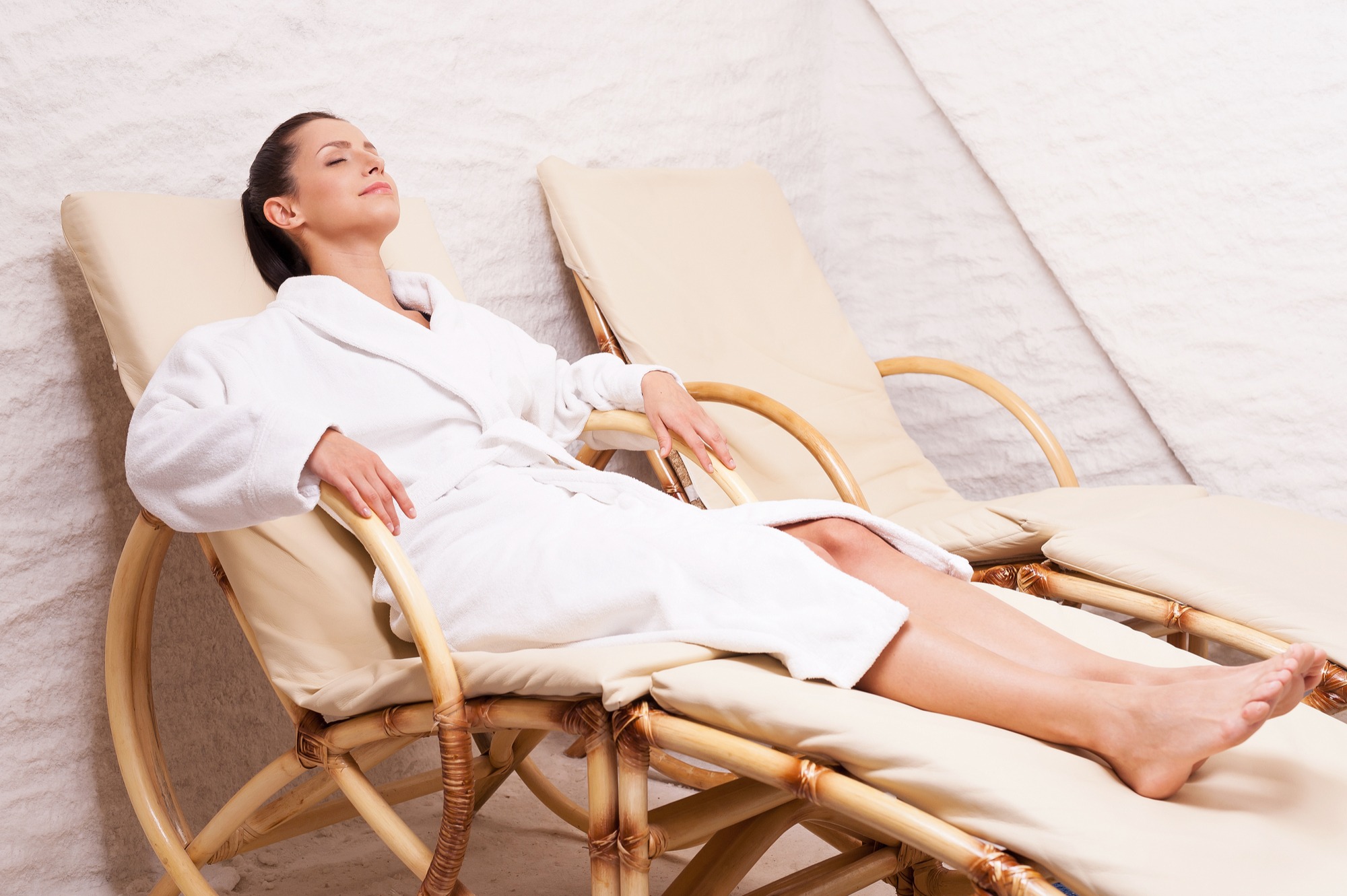

Bioaerosols of subterraneotherapy chambers at salt mine health resort. The effect of a dry salt inhaler in adults with COPD. microsalt.cl/EvidenciaMedica/Engels%20True%20Halotherapy%20May%202011%20Microsalt%20Booklet.pdf True halotherapy: History, technology development: The role in medicine and the medical application of dry salt aerosol inhalation. about-salt-therapy/types-of-salt-therapy/ About salt therapy: Types of salt therapy.about-salt-therapy/how-and-why-it-works/ About salt therapy: How and why it works.About salt therapy: History and background.AAFA explains: Is salt therapy safe and effective for asthma? /blog/aafa-explains-is-therapy-safe-and-effective-for-asthma

You can learn more about how we ensure our content is accurate and current by reading our editorial policy. Healthline has strict sourcing guidelines and relies on peer-reviewed studies, academic research institutions, and medical associations. The amount of salt administered can vary greatly. However, there’s no standardization across halotherapy clinics. According to a 2008 study, inhaling a 3 percent saline solution is a safe and effective treatment for infants with bronchiolitis. However, there’s little research to back up this claim. Supporters of halotherapy claim it’s safe for children and pregnant women. Don’t stop any medications without discussing it with your doctor. Let your doctor know you want to try this approach. Halotherapy is a complementary therapy that’s meant to work with any medications you’re on. Some people also report getting headaches during halotherapy. This can make coughing, wheezing, and shortness of breath worse. While it’s said to treat asthma, halotherapy might also constrict or irritate the airwaves in people with asthma.

Keep this in mind as you weigh the pros and cons of halotherapy. In addition, halotherapy is usually done in a spa or wellness clinic without trained medical staff on hand to handle medical emergencies. Halotherapy is probably safe for most people, but there aren’t any studies on its safety. This means it’s based on people’s personal experiences.
#HALO THERAPY SKIN#
Halotherapy triggers anti-inflammatory and anti-allergic responses in people with bronchial asthma or chronic bronchitis, according to 2014 research.Īlmost all research on halotherapy for depression or skin conditions is anecdotal.This is a condition that makes it hard to clear mucus from the lungs. According to a 2013 study, halotherapy didn’t improve the outcome of lung function tests or quality of life in people with non-cystic fibrosis bronchiectasis.According to a 2014 review, most studies on halotherapy for COPD are flawed.Still, the Lung Institute doesn’t recommend it because medical guidelines haven’t been established. In a 2007 study, people with chronic obstructive pulmonary disease (COPD) had fewer symptoms and improved quality of life after halotherapy.Some studies have shown promise, but most research is inconclusive or conflicting. Science hasn’t caught up with the halotherapy hype yet. Halotherapy is also done using a mixture of salt and water. However, there’s no evidence that these lamps have any benefit other than adding ambience. Many people use Himalayan salt lamps to get the benefits of negative ions at home. This theoretically causes your body to release more serotonin, one of the chemicals behind feelings of happiness. Salt is also said to produce negative ions. The salt particles are said to have a similar effect on your skin by absorbing bacteria and other impurities responsible for many skin conditions. Advocates say this process breaks up mucus and reduces inflammation, resulting in clear airways. Once inhaled, these salt particles are claimed to absorb irritants, including allergens and toxins, from the respiratory system. Sessions usually last for about 30 to 45 minutes.Ī device called a halogenerator grinds salt into microscopic particles and releases them into the air of the room. The temperature is cool, set to 68☏ (20☌) or lower.
#HALO THERAPY FREE#
The dry method of halotherapy is usually done in a man-made “salt cave” that’s free of humidity. Halotherapy is usually broken down into dry and wet methods, depending on how the salt is administered.


 0 kommentar(er)
0 kommentar(er)
